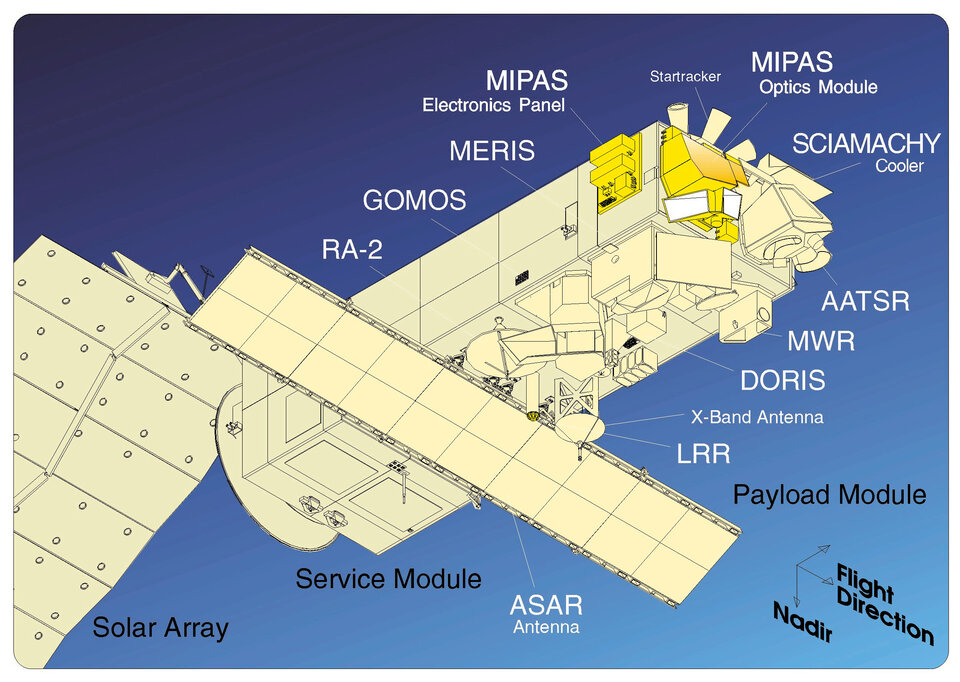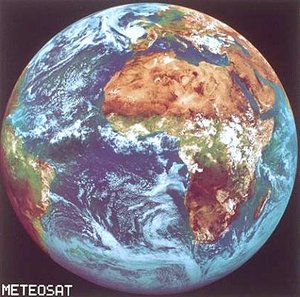What is Envisat?
Envisat is the most powerful European Earth Observation satellite yet built. It has begun making the most complete set of observations of our planet that any satellite has ever carried out. Envisat monitors:
- The land
- Oceans
- Atmosphere
- Ice caps
It helps scientists to understand how changes to one, say climate, affect the others. Envisat is a key element of the European Space Agency’s plans for the next decade to monitor Earth’s environment.
Why does Envisat matter?

- How fast are the ice caps melting?
- What is the state of the rain forests?
- What is the state of the El Nino current?
- What concentrations of greenhouse gases are to be found in the atmosphere?
- Is the ozone hole growing?
Envisat can help to answer questions important for the future of all humanity.
Scientists and policy makers need the kind of data that Envisat and other Earth-observing satellites collect so that they can make informed decisions about how to protect Earth’s environment.
Overview of Envisat’s mission

The Earth’s ocean, the land with its plant and animal life, the ice covered regions (cryosphere) and all levels of the atmosphere (troposphere, stratosphere and mesosphere) are all parts of an interconnected system – the Earth system. A change in any one part affects what happens elsewhere in the system.
Envisat carries instruments to collect information that will help scientists to understand each part of the Earth system and to predict how changes in one part will affect others.
Many of Envisat’s instruments are a development of those that flew on the Agency’s Earth-Observing missions of the 1990s (ERS-1 and -2). This means that scientists have observations stretching back over 10 years. It will be possible, therefore, to make comparisons between conditions observed during Envisat’s lifetime and those recorded during the past 10 years.






